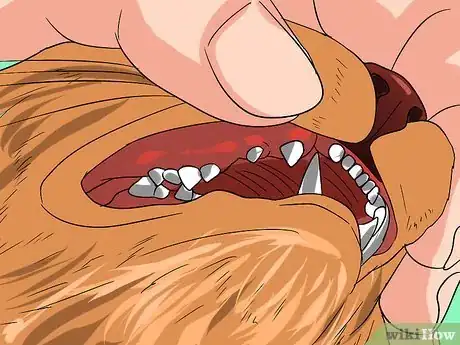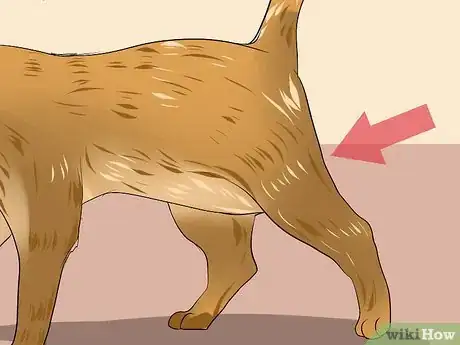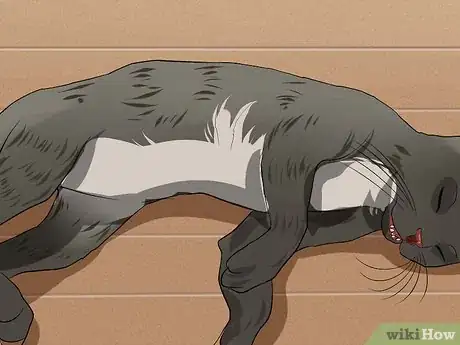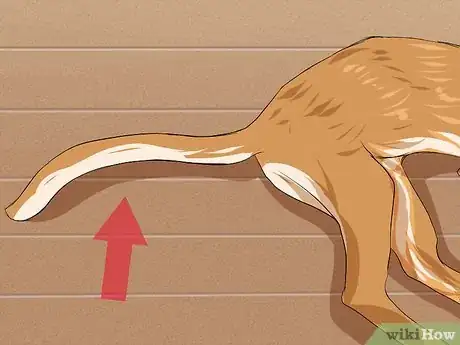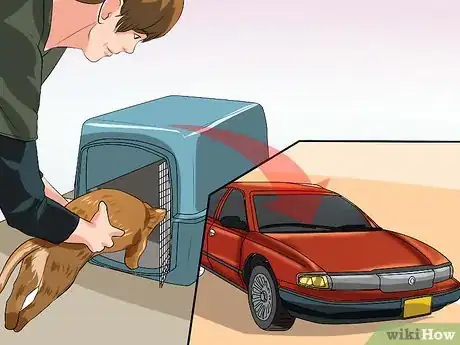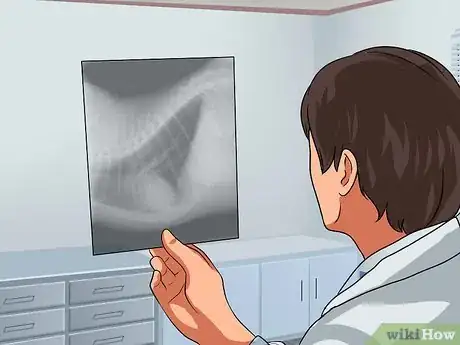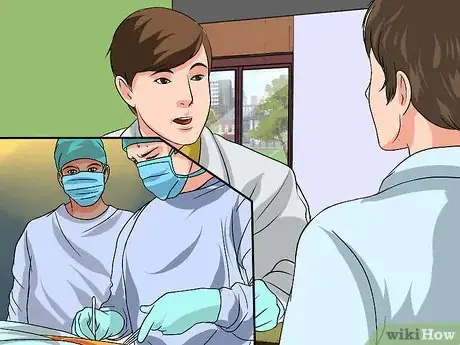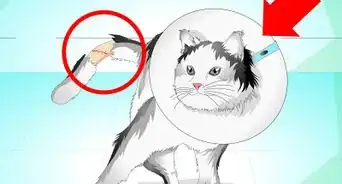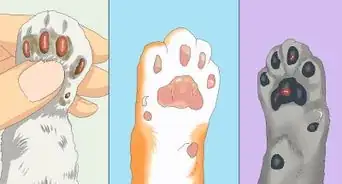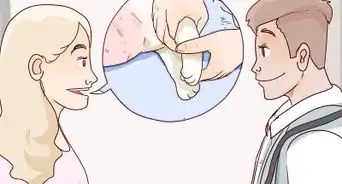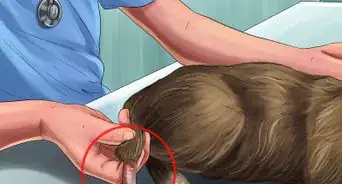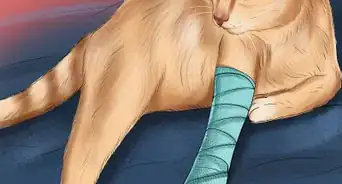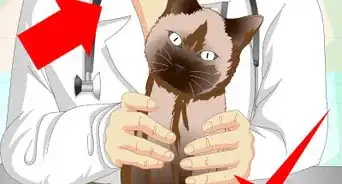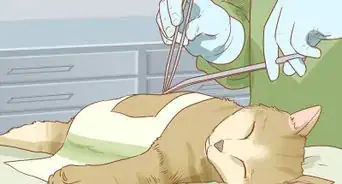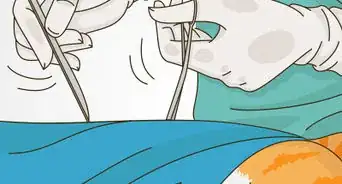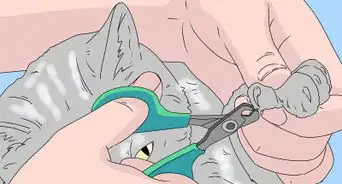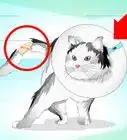This article was co-authored by Pippa Elliott, MRCVS. Dr. Elliott, BVMS, MRCVS is a veterinarian with over 30 years of experience in veterinary surgery and companion animal practice. She graduated from the University of Glasgow in 1987 with a degree in veterinary medicine and surgery. She has worked at the same animal clinic in her hometown for over 20 years.
There are 7 references cited in this article, which can be found at the bottom of the page.
This article has been viewed 28,740 times.
Many cats have a curious nature and a love of adventure, which can mean that they find themselves in dangerous situations from time to time. One very serious consequence of their inquisitive nature can be an accidental bone fracture. Any bone can be fractured on a cat’s body but the most frequent fractures involve the jaw, limbs, ribs, pelvis, and tail. If you are a cat owner, and especially if you own an especially adventurous cat, you should know the signs that signal that your cat may have a fracture so that you can get it medical treatment as soon as possible.
Steps
Identifying the Signs of a Fracture
-
1Assess whether your cat has a jaw fracture. These include both physical and behavioral signs that your cat is having problems with its jaw. The signs of a jaw fracture include:[1] [2]
- Inability to close the mouth
- Pain and swelling around the jaw and face
- Reluctant to eat
- Other injuries especially around the head
- Bleeding from the mouth and/or nose
- Obvious deformity of the jaw and/or face
- Broken teeth
- Drooling blood-tinged saliva
-
2Look for the signs of a limb or pelvis fracture. When either the front or back leg or the pelvis is broken, a cat will show a number of signs that indicate there is a serious problem going on. There is always a chance that in addition to the broken limb or pelvis another part of the cat’s body may be injured so keep that in mind when examining the cat for injuries and exercise caution as you do so. The signs of a limb or pelvis fracture include:[3]
- Limping
- Unable to bear weight on the affected leg
- Swelling
- Pain when area is touched or move
- Refusing to walk
- Hiding
Advertisement -
3Be aware of the symptoms of a rib fracture. Rib fractures are very serious. This is a medical emergency and your cat will need to be taken to a veterinarian or emergency clinic immediately to assess its breathing and to help it survive. This is because the ribs can puncture the lungs, causing extreme breathing difficulties. Signs of rib fractures in cats are:[4]
- Shallow breathing
- Difficulty breathing
- Chest looks distorted
- Pain
- Hiding
-
4Assess whether your cat has a broken tail. The bones in the tail can be fractured like any other bone. A big cause of tail fractures is being slammed in a door. A tail that is pulled can also break.
- A tail fracture presents as a limp tail, a tail unable to be swished from side to side, a bent or crooked tail, and/or a tail that is painful.[5]
Getting a Veterinary Diagnosis
-
1Take your cat to its veterinarian. A broken bone, whatever bone it is, is a serious injury. At the first sign of a fracture, call your veterinarian or emergency clinic for prompt treatment and relief of pain.
- Your cat deserves medical care and treatment for a broken bone, even if that treatment simply means that the cat's pain is managed.
- Your veterinarian will assess the overall health of the cat, in addition to paying attention to the area of the suspected fracture.
-
2Allow your veterinarian to take X-rays of the area. This will increase the veterinary bill, so prepare yourself to deal with the financial impact of the assessment and treatment. In most cases, to get a proper X-ray the cat will need to be sedated and posed in different positions. This includes on its back, on its side, from the top of the back, and, in the case of jaw fractures, at various angles with the mouth both opened and closed.
- The most common way for a veterinarian to diagnose a fracture is by use of radiographs or X-rays.[6] Many closed fractures (those beneath the skin) are easily seen once a proper X-ray is taken.
- In the case of an open fracture, the broken bone will be obviously sticking out of the body, but X-rays need to be taken of these fractures, as there may be other fractured bones beneath the skin. In most cases a number of X-rays need to be taken to properly assess the fracture.
- In some cases, specialized techniques are used to catch those fractures that are not a “simple” break. Bones can fracture in any direction (diagonally, spirally) or they can shatter into pieces.
-
3Follow your veterinarian's suggestions for treatment. The treatment will vary depending on the type and location of the fracture. For example, many hair-line fractures will heal on their own if they are immobilized. However, open fractures and spiral fractures will likely require in-depth surgery to correct.
- Many times amputation is the only solution to a broken tail. However, a fracture which only occurs at the tip can sometimes heal on its own.[7]
- Severe health problems, such as a fracture, are a good reason to invest in pet insurance. If you have pet insurance and your cat gets a devastating injury, the cost will be offset and you will not have to weigh your financial situation against the health of your pet.
Warnings
- At the first sign of a fracture call your veterinarian or emergency clinic for prompt treatment and relief of pain.⧼thumbs_response⧽
- Exercise caution when handling any injured animal, including a cat. They can and will bite due to pain and fear. Wear long sleeves and a thick long sleeved coat along with thick leather gloves before attempting to handle the cat. Carefully wrap the cat in a towel and place it in a secure kennel before transporting to a veterinarian’s office or emergency clinic.⧼thumbs_response⧽
References
- ↑ www.petmd.com/cat/conditions/mouth/c_ct_upper_lower_jaw_fracture
- ↑ https://www.acvs.org/small-animal/mandibular-fractures
- ↑ https://www.acvs.org/small-animal/fractured-limbs
- ↑ Manual of Trauma Management in the Dog and Cat. Kenneth J. Drobatz, Matthew W. Beal and Rebecca S. Syring. John Wiley & Sons. 2011
- ↑ www.vetinfo.com/cat-tail-injuries.html
- ↑ An Atlas of Radiology of the Traumatized Dog and Cat: The Case-based Approach. Joe P. Morgan and Pim Wolvekamp. Schlütersche. 2005.
- ↑ www.vetstreet.com/dr-marty-becker/4-injuries-that-can-take-the-wag-out-of-your-pets-tail
